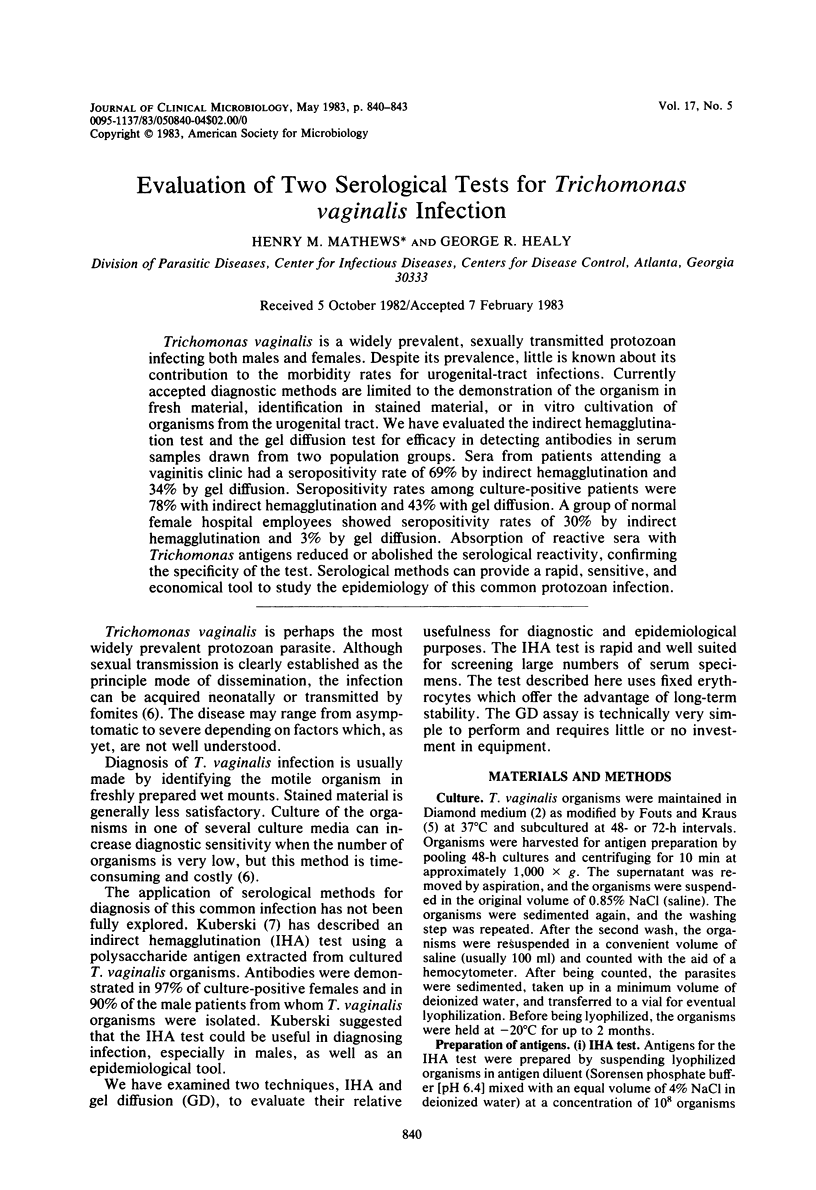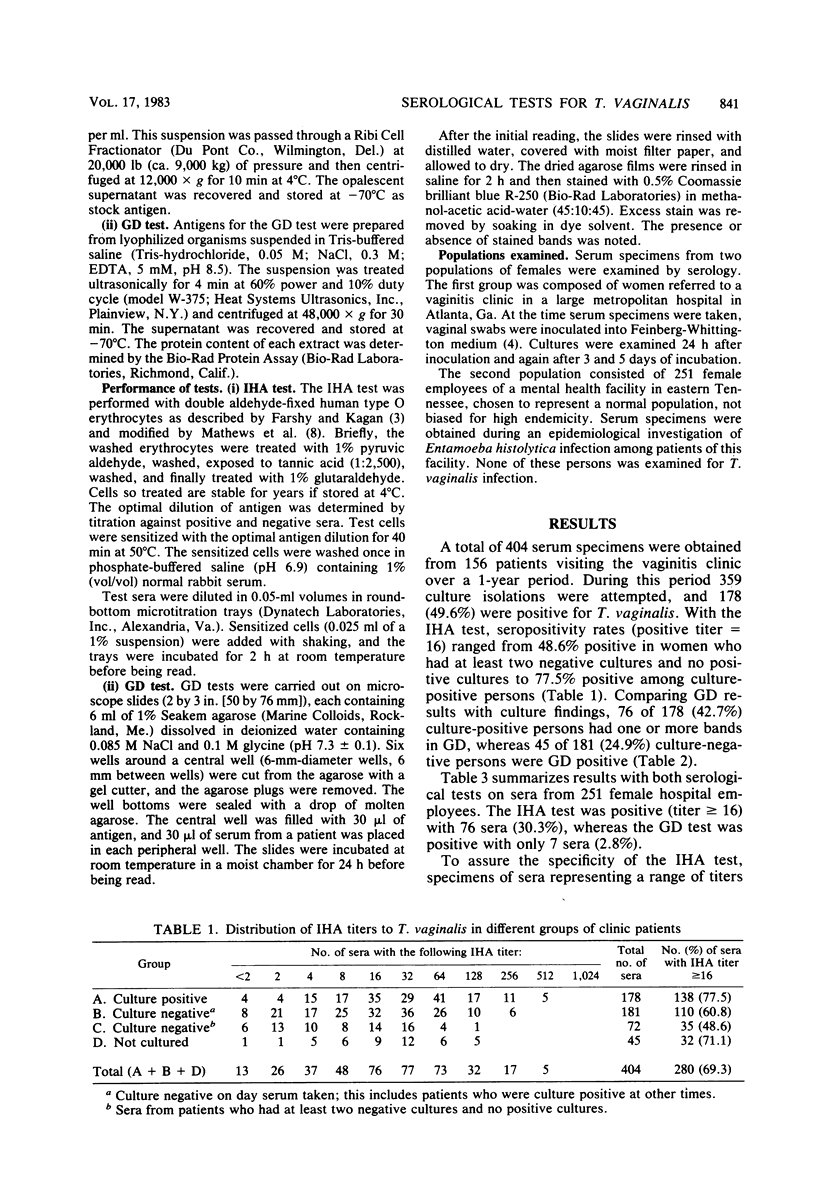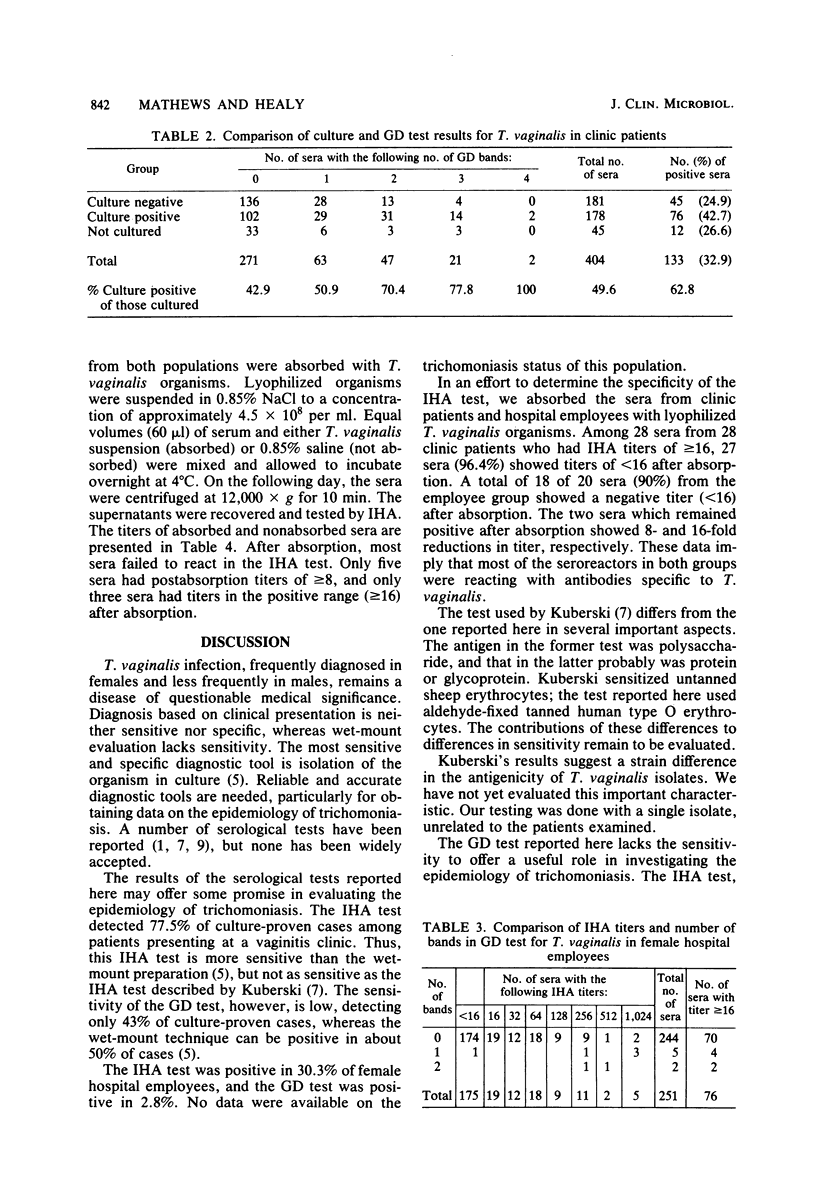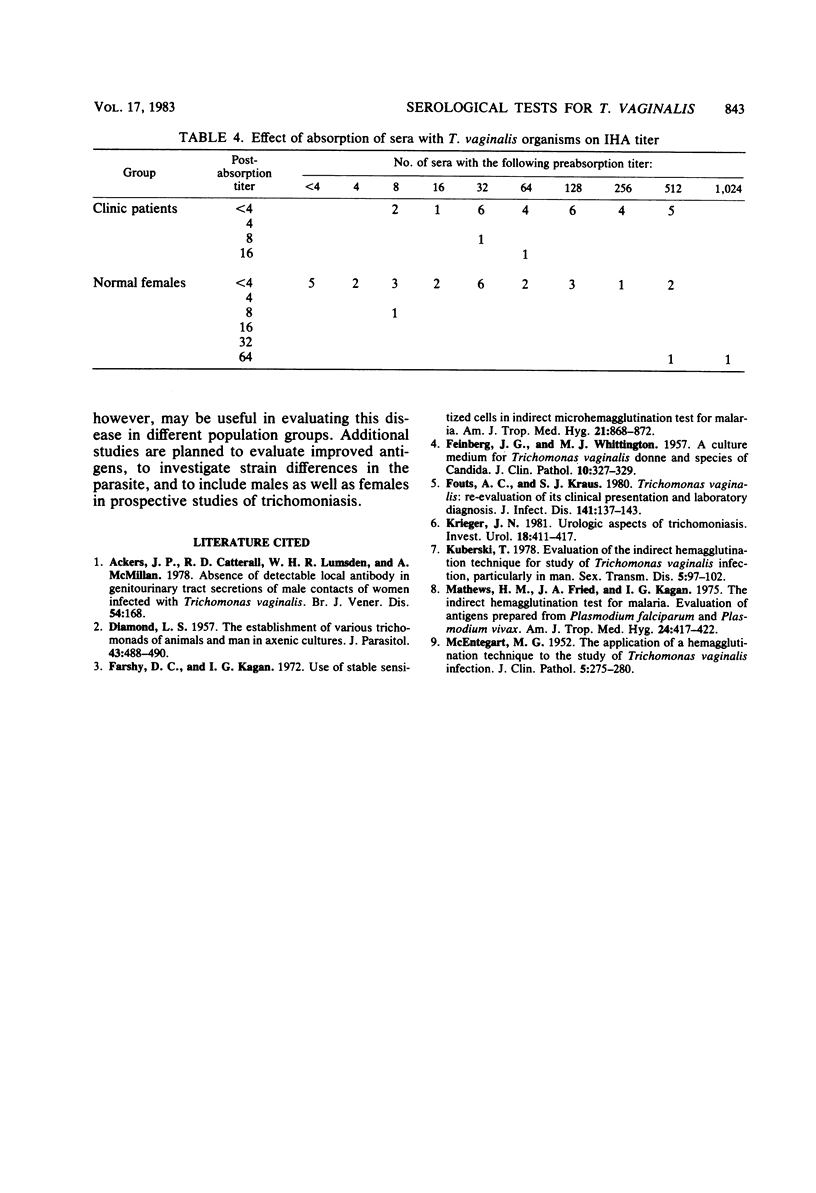Abstract
Trichomonas vaginalis is a widely prevalent, sexually transmitted protozoan infecting both males and females. Despite its prevalence, little is known about its contribution to the morbidity rates for urogenital-tract infections. Currently accepted diagnostic methods are limited to the demonstration of the organism in fresh material, identification in stained material, or in vitro cultivation of organisms from the urogenital tract. We have evaluated the indirect hemagglutination test and the gel diffusion test for efficacy in detecting antibodies in serum samples drawn from two population groups. Sera from patients attending a vaginitis clinic had a seropositivity rate of 69% by indirect hemagglutination and 34% by gel diffusion. Seropositivity rates among culture-positive patients were 78% with indirect hemagglutination and 43% with gel diffusion. A group of normal female hospital employees showed seropositivity rates of 30% by indirect hemagglutination and 3% by gel diffusion. Absorption of reactive sera with Trichomonas antigens reduced or abolished the serological reactivity, confirming the specificity of the test. Serological methods can provide a rapid, sensitive, and economical tool to study the epidemiology of this common protozoan infection.
Full text
PDF



Selected References
These references are in PubMed. This may not be the complete list of references from this article.
- Ackers J. P., Catterall R. D., Lumsden W. H., McMillan A. Absence of detectable local antibody in genitourinary tract secretions of male contacts of women infected with Trichomonas vaginalis. Br J Vener Dis. 1978 Jun;54(3):168–171. doi: 10.1136/sti.54.3.168. [DOI] [PMC free article] [PubMed] [Google Scholar]
- DIAMOND L. S. The establishment of various trichomonads of animals and man in axenic cultures. J Parasitol. 1957 Aug;43(4):488–490. [PubMed] [Google Scholar]
- FEINBERG J. G., WHITTINGTON M. J. A culture medium for Trichomonas vaginalis donné and species of Candida. J Clin Pathol. 1957 Nov;10(4):327–329. doi: 10.1136/jcp.10.4.327. [DOI] [PMC free article] [PubMed] [Google Scholar]
- Farshy D. C., Kagan I. G. Use of stable sensitized cells in indirect microhemagglutination test for malaria. Am J Trop Med Hyg. 1972 Nov;21(6):868–872. doi: 10.4269/ajtmh.1972.21.868. [DOI] [PubMed] [Google Scholar]
- Fouts A. C., Kraus S. J. Trichomonas vaginalis: reevaluation of its clinical presentation and laboratory diagnosis. J Infect Dis. 1980 Feb;141(2):137–143. doi: 10.1093/infdis/141.2.137. [DOI] [PubMed] [Google Scholar]
- Krieger J. N. Urologic aspects of trichomoniasis. Invest Urol. 1981 May;18(8):411–417. [PubMed] [Google Scholar]
- Kuberski T. Evaluation of the indirect hemagglutination technique for study of Trichomonas vaginalis infections, particularly in men. Sex Transm Dis. 1978 Jul-Sep;5(3):97–102. doi: 10.1097/00007435-197807000-00004. [DOI] [PubMed] [Google Scholar]
- Mathews H. M., Fried J. A., Kagan I. G. The indirect hemagglutination test for malaria. Evaluation of antigens prepared from Plasmodium falciparum and Plasmodium vivax. Am J Trop Med Hyg. 1975 May;24(3):417–421. doi: 10.4269/ajtmh.1975.24.417. [DOI] [PMC free article] [PubMed] [Google Scholar]
- McENTEGART M. G. The application of a haemagglutination technique to the study of Trichomonas vaginalis infections. J Clin Pathol. 1952 Aug;5(3):275–280. doi: 10.1136/jcp.5.3.275. [DOI] [PMC free article] [PubMed] [Google Scholar]


